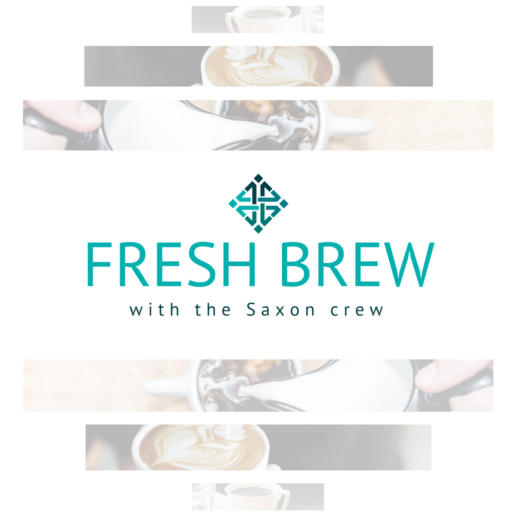It might be time for a financial wellness checkup
Forty-six percent of employees spend two to three hours per week at work dealing with personal finances. Read this blog post to learn what employers can do if they want a stress-free and productive workforce.
We’ve all seen the infamous statistics — 56% of American workers struggle financially, 75% live paycheck to paycheck. A majority of Americans can’t come up with $1,000 for an emergency.
It is quite obvious that financial worries have a massive impact on happiness and stress levels, but what business owners, executives and human resource professionals understand is that this lack of financial wellness in the U.S. has a devastating effect on worker productivity, and therefore, employers’ bottom lines.
Employees who spend time during their day worried about bills and loans are less focused on getting their work done. In fact, a staggering 46% of employees spend, on average, two to three hours per week dealing with personal finance issues during work hours. So what can employers offer their workers to help them become more financially sound?

There are a number of ways to help employees improve their financial well-being – including utilizing the help of a financial wellness benefit platform – but at the very least, there are three major benefits that every business should employ if they want a stress-free and productive workforce.
Savings, investment and retirement solutions. Offering employees the ability to automatically allocate their paychecks into savings, investment and retirement accounts will help them more effectively meet their financial goals without worrying about moving money around. These types of programs should allow employees to make temporary or permanent changes at any time to reflect any immediate changes that may occur in their life.
Credit solutions and loan consolidation. Having a reliable source of credit is extremely important, but access to it can also be dangerous for big spenders. Employers should guide workers towards making informed financial decisions and teach them how to use credit wisely. Employers need to be able to refer employees to affordable and trusted sources for things like credit cards, short-term loan options and mortgages, so employees don’t have to spend time doing the research for themselves (or worse, potentially becoming victims of fraud). Companies should also offer resources that teach employees how to organize their finances to pay their debt off on time without accumulating unnecessary interest or fees.
Insurance (not just health). While many large companies offer the traditional health, dental, vision, disability and life insurance, employers should also be offering resources that give easy access to vehicle, home, renters, boat, pet and other common insurance products. Some insurance carriers even offer volume discounts, so if a large percentage of employees in an organization utilize pet insurance, everyone can save some money.
While it is important for employers to offer these benefits, it is also important to follow up with employees and make sure they are utilizing all of the benefits they have access to. Sometimes people can have too much pride or can be afraid to ask for financial help. The use of these programs should be talked about, encouraged and even rewarded.
Justifying the investment in these benefits is simple. Employers want to increase productivity, and employees want to be more financially sound. The workplace is evolving and so is the workforce, so while you look to add benefits like 401(k), work from home, summer Fridays, gym memberships and free lunch, don’t forget about the financial wellness of the people you employ. Maybe next year, you will see that your workers are focused less on their college loans and are able to put more effort into growing your business.
SOURCE: Kilby, D. (2 January 2019) "It might be time for a financial wellness checkup" (Web Blog Post). Retrieved from https://www.benefitnews.com/opinion/it-might-be-time-for-a-financial-wellness-checkup?feed=00000152-a2fb-d118-ab57-b3ff6e310000
It might be time for a financial wellness checkup
On average, 46 percent of workers spend two to three hours during the work week dealing with personal finance issues. Continue reading this blog post to learn how employers can help employees improve their financial wellness.
We’ve all seen the infamous statistics — 56% of American workers struggle financially, 75% live paycheck to paycheck. A majority of Americans can’t come up with $1,000 for an emergency.
It is quite obvious that financial worries have a massive impact on happiness and stress levels, but what business owners, executives and human resource professionals understand is that this lack of financial wellness in the U.S. has a devastating effect on worker productivity, and therefore, employers’ bottom lines.
Employees who spend time during their day worried about bills and loans are less focused on getting their work done. In fact, a staggering 46% of employees spend, on average, two to three hours per week dealing with personal finance issues during work hours. So what can employers offer their workers to help them become more financially sound?
There are a number of ways to help employees improve their financial well-being – including utilizing the help of a financial wellness benefit platform – but at the very least, there are three major benefits that every business should employ if they want a stress-free and productive workforce.
Savings, investment and retirement solutions. Offering employees the ability to automatically allocate their paychecks into savings, investment and retirement accounts will help them more effectively meet their financial goals without worrying about moving money around. These types of programs should allow employees to make temporary or permanent changes at any time to reflect any immediate changes that may occur in their life.
Credit solutions and loan consolidation. Having a reliable source of credit is extremely important, but access to it can also be dangerous for big spenders. Employers should guide workers towards making informed financial decisions and teach them how to use credit wisely. Employers need to be able to refer employees to affordable and trusted sources for things like credit cards, short-term loan options and mortgages, so employees don’t have to spend time doing the research for themselves (or worse, potentially becoming victims of fraud). Companies should also offer resources that teach employees how to organize their finances to pay their debt off on time without accumulating unnecessary interest or fees.
Insurance (not just health). While many large companies offer the traditional health, dental, vision, disability and life insurance, employers should also be offering resources that give easy access to vehicle, home, renters, boat, pet and other common insurance products. Some insurance carriers even offer volume discounts, so if a large percentage of employees in an organization utilize pet insurance, everyone can save some money.
While it is important for employers to offer these benefits, it is also important to follow up with employees and make sure they are utilizing all of the benefits they have access to. Sometimes people can have too much pride or can be afraid to ask for financial help. The use of these programs should be talked about, encouraged and even rewarded.
Justifying the investment in these benefits is simple. Employers want to increase productivity, and employees want to be more financially sound. The workplace is evolving and so is the workforce, so while you look to add benefits like 401(k), work from home, summer Fridays, gym memberships and free lunch, don’t forget about the financial wellness of the people you employ. Maybe next year, you will see that your workers are focused less on their college loans and are able to put more effort into growing your business.
SOURCE: Kilby, D. (14 December 2018) "It might be time for a financial wellness checkup" (Web Blog Post). Retrieved from https://www.benefitnews.com/opinion/it-might-be-time-for-a-financial-wellness-checkup
Fresh Brew with Rich Arnold
Welcome to our brand new segment, Fresh Brew, where we will be exploring the delicious coffees, teas, and snacks of some of our employees! You can look forward to our Fresh Brew blog post on the first Friday of every month.
“I enjoy helping people over 65 understand Medicare and the many options they have. Explaining Medicare in easy to understand terms, clearly showing them the options based on their doctors and prescriptions, and letting them make a choice which they are comfortable with has been one of the most gratifying things I’ve ever done.”
Rich Arnold is a Senior Solutions Agent at Saxon Financial Services.
Over the years, Rich has been a teacher, an owner of several printing businesses, and retired after 10 years of running the Sharonville Chamber of Commerce. In his spare time, Rich is actively working with non-profits, helping with community projects and spending time with his 5 grandchildren.


Diet Mountain Dew
Rich is not a coffee drinker but enjoys a Diet Mountain Dew!

Honey Roasted Peanuts
Rich enjoys sipping on his favorite brew while eating Honey Roasted Peanuts.
It’s peak flu season. Here’s what employers should do now
Employers can expect to see an influx of coughing, sneezing, and germ passing at the office this time of year. Read this blog post to learn what proactive steps employers can take to keep the workplace healthy.
The U.S. is in the height of flu season, which means employers are likely to see an influx of employees coughing, sneezing and spreading germs in the office. Aside from passing a box of tissues, employers may be wondering what they are legally permitted to do when their workers get sick.
One benefit that is becoming increasingly relevant is paid sick leave. Several cities and states — including Arizona, California, Connecticut, Massachusetts, Chicago and others — have paid sick leave laws on the books. But while many companies offer paid sick leave as a benefit, there is no federal paid sick leave law. Paid sick leave laws may remove some incentive for sick workers to report to work, making the illness less likely to spread to the rest of the workforce.
But paid sick leave laws do place limitations on employers. For example, companies cannot make taking a paid sick leave day contingent upon the employee finding someone to cover their shift. Depending on the law, employees don’t always need to give notice of their absence before their shift begins, which could make scheduling difficult. Some laws limit an employer’s ability to ask for a doctor’s note.
Employers do, however, have some latitude when it comes to requiring employees to stay home from work or sending them home if they show signs of illness. Employers just need to be careful not to cross any lines set by the federal Americans with Disabilities Act or a state fair employment statute. This means steering clear of conducting medical examinations or making a disability-related inquiry.
According to the U.S. Equal Employment Opportunity Commission, employers should avoid taking an employee’s temperature. This is considered a medical examination by an employer, which is generally prohibited except in limited circumstances.
They should also avoid asking employees to disclose whether they have a medical condition that could make them especially vulnerable to complications from influenza or other common illnesses. Doing so would likely violate the ADA or state laws, even if the employer is asking with the best of intentions. Employers also cannot require workers to get a flu shot, according to the EEOC.
Employees could have a disability that prevents them from taking the influenza vaccine, which could compel them to disclose an underlying medical condition to their employer to avoid taking the shot. Additionally, some employees may observe religious practices that would prevent them from taking the flu vaccines. Thus, requiring an employee to take a vaccine could lead to a violation of Title VII of the federal Civil Rights Act of 1964 in addition to the ADA.
Beyond these limitations, employers can take these proactive steps to keep the workplace healthy.
Ask employees if they are symptomatic. In determining who should go home or not report to work, employers may ask workers if they are experiencing flu-like symptoms. This would not rise to the level of a medical exam or a disability-related inquiry, according to the EEOC.
Advise workers to go home. Employers can order an employee to go home if they are showing signs of the flu. The EEOC says that advising such workers to go home is not a disability-related action if the illness is like seasonal influenza.
Encourage workers to telecommute as an infection-control strategy. But keep in mind that the company could be establishing a precedent for telecommuting as a reasonable accommodation in other circumstances, such as for an employee recovering from major surgery who cannot come to the workplace.
Encourage flu shots. Employers may encourage — but not require — employees to get flu shots. For example, a company can invite a healthcare professional to the workplace to administer flu shots at a discounted rate or free.
Employers may require its employees to adopt certain infection-control strategies, such as regular hand washing, coughing and sneezing etiquette, proper tissue usage and disposal, and even wearing a mask.
The ADA, Title VII, state fair employment laws and paid sick leave statutes are also incredibly nuanced. Moreover, it’s important to balance the mandates of OSHA, which require employers to maintain a safe working environment. Before taking any significant actions, employers should consult with an employment attorney or HR professional for guidance.
SOURCE: Starkman, J.; Dominguez, R. (4 December 2018) "It’s peak flu season. Here’s what employers should do now" (Web Blog Post). Retrieved from https://www.benefitnews.com/opinion/its-peak-flu-season-heres-what-employers-should-do-now?brief=00000152-14a5-d1cc-a5fa-7cff48fe0001
11 top workplace stressors
According to a recent survey by CareerCast, deadlines are the top workplace stressor for employees. Read this blog post for more of the top workplace stressors.
With workplace stress leading to lower productivity and increased turnover, an important tool in an employer’s pocket is a working knowledge of what workplace stressors exist and how to help workers manage them. A new survey from CareerCast, a job search portal, finds these following 11 factors represent the most common stressors in any given profession.
The CareerCast Job Stress survey had 1,071 respondents who selected the most stressful part of their job from one of the 11 stress factors used to compile CareerCast’s most and least stressful jobs report.
11. Environmental conditions
10. Travel
9. Meeting the public
8. Hazards encountered
7. Life at risk
6. Growth potential
5. Working in the public eye
4. Physical Demands
3. Competitiveness
2. Life of another at risk
1. Deadlines
30% of respondents say this is a leading contributor to workplace stress.
For the full CareerCast report, click here.
SOURCE: Otto, N. (5 May 2017) "11 top workplace stressors" (Web Blog Post). Retrieved from https://www.employeebenefitadviser.com/slideshow/11-top-workplace-stressors?tag=00000151-16d0-def7-a1db-97f03af00000
New resource offers guidance on digital tools for diabetes management
The market for digital diabetes management tools is continuing to mature. Read this blog post for the Northeast Business Group on Health’s updated guide on diabetes management tools.
The Northeast Business Group on Health has updated its “Digital Tools and Solutions for Diabetes: An Employer’s Guide,” to include both enhanced and new solutions—and promising future innovations—to help employers help their workers better manage their diabetes, lower costs and ultimately save more lives.
“Employers are well aware of the costs associated with diabetes in their employee and dependent populations—they continue to indicate this is a top concern and are increasingly aware of the links between diabetes and other chronic and debilitating health conditions, including cardiovascular disease,” says Candice Sherman, CEO of NEBGH.
The market for digital diabetes prevention and management solutions continues to mature since the group published its first guide in 2016, Sherman says. The updated guide provides a detailed checklist of the features and functionalities of the digital tools available now to manage diabetes, as well as information on several unique and innovative digital diabetes solutions that are being targeted to employers but were not part of NEBGH’s research, including Proteus Discover, BlueLoop and do-it-yourself programs.
“Proteus Discover is comprised of ingestible sensors, a small wearable sensor patch, an application on a mobile device and a provider portal,” the guide cites the provider. “Once activated, Proteus Discover unlocks never-before-seen insight into patient health patterns and medication treatment effectiveness, leading to more informed healthcare decisions for everyone involved.”
“BlueLoop is the one and only tool that allows kids and their caregivers to log and share diabetes information—both online and with the app—in real time, via instant e-mail and text message, giving peace of mind to parents,more class time for students and fewer phone calls and paper logs for school nurses,” the provider tells NEBGH. “Online, parents can share real-time BG logs with their clinicians, who can see logs (in the format they prefer), current dosages and reports, all in one place.”
The guide also hints at promising future innovations:
“Technology is constantly evolving: by connecting sensors, wearables and apps, it is increasingly possible to pool and leverage data in innovative ways to provide timely interventions so that people with diabetes can be truly independent and effectively self-manage their care,” the authors write.
The guide lists a hypothetical scenario: A person with diabetes enters a restaurant where a GPS sensor identifies the location, reviews the menu and proposes the best choices based on caloric and carbohydrate content. The technology also proposes and delivers a rapidly acting insulin bolus dose based on the person’s exercise level that day and prior experiences when eating similar meals.
Also included are key questions for employers considering implementing digital diabetes tools or solutions, including:
- What does the company want to achieve with a digital tool?
- How much is the company willing to pay?
- How will success be measured?
- How will digital solutions and tools be marketed to employees and their families?
- What privacy issues need to be addressed when tools or solutions are implemented?
“Digital health tools hold the promise of improved health outcomes and reduced health care expenses through improved engagement, better collaboration and sustained behavior change,” says Mark Cunningham-Hill, NEBGH’s medical director. “However, digital diabetes solutions are not a panacea. Employers will need to address several obstacles such as the difficulty of recruitment and enrollment, lack of sustained employee engagement and the cost of deployment of digital solutions. This can be accomplished through careful planning and learning from other employers that have successfully implemented these tools.”
SOURCE: Kuehner-Hebert, K. (4 December 2018) "New resource offers guidance on digital tools for diabetes management" (Web Blog Post). Retrieved from https://www.benefitspro.com/2018/12/04/new-resource-digital-tools-for-diabetes-management/
4 trends in employee wellness programs for 2019
Employee wellness programs will be impacted by intelligent personalization, social recognition, virtual wellness and smarter analytics, according to a white paper by MediKeeper. Read on to learn more.
Employee wellness programs will likely be transformed in the coming year by intelligent personalization, social recognition, virtual wellness and smarter analytics, according to MediKeeper’s white paper, “Four Emerging Employee Wellness Trends for 2019.”
“Embracing change and knowing what organizations need to keep driving wellness offerings forward in the next few years will help them lay the groundwork for building stronger employee wellness programs and increasing employee engagement,” says MediKeeper’s CEO David Ashworth. “With health care costs on the rise, companies that pay attention to these key trends will have the greatest success investing in their employees’ overall well-being.”
Intelligent Personalization
Intelligent personalization allows companies to make more informed decisions based on understanding risks and their causes and identifying what is driving present and future cost, according to the white paper.
“Every person is different, so it only makes sense that everyone’s wellness portal experience should also be different — this includes personalization, targeted messages and offerings.,” the authors write. “Adding business intelligence/data mining capabilities delivers the ability to take data captured within the portal, manipulate it, segment it and merge with other sets of data to perform complex associations all within each population groups’ administration portal will be the key to truly managing the population’s health.”
Social Recognition
In the coming year, workplace wellness programs will also implement a multitude of ways to include social recognition that fosters a team-oriented atmosphere intended to encourage people to perform to the best of their abilities, according to the white paper.
“Through social recognition, which can include posting, sharing, commenting and other virtual interactions, employees can help motivate each other to reach their goals,” the authors write. “These interactions foster both a competitive and team-oriented atmosphere that encourages people to perform to the best of their abilities.”
In addition to support from coworkers, managers can also promote their employees’ achievements by offering praise in an online public forum or even further boost morale by handing out incentive points that can be redeemed for tangible rewards.
Virtual Wellness Programming
In 2019, the importance of offering virtual wellness programming will grow as more employees work remotely or set flexible hours, according to the white paper.
“Since employees may work variable hours or work in several locations around the world, it simply doesn’t make sense to solely rely on lunchtime health seminars that may not be accessible to much of the workforce,” the authors write. “Instead of providing physical classes, consider hosting virtual programs that can be viewed at any time or any place. By making your wellness program available online, you’re able to reach a broader audience and make more of an impact within the entire working population.”
Smarter Analytics
Smarter analytics will also be at the forefront in 2019, according to the white paper.
“Now you can generate reports targeted specifically to the information that you are seeking, as well as layering various reports including biometrics, incentives, health risk assessments and challenges, to see what is working and what is not,” the authors write. “You can use these results to inform and better customize the intelligent personalization side of your wellness program. You’ll also be able to send messages from the reports, making them actionable instead of just informative.”
As employers continue to evaluate the effectiveness of their wellness programs, they should keep these four emerging trends in mind in order to ensure that their business is providing all the tools necessary to keep their employees both happy and healthy, according to the white paper.
“Remember that just because you’ve seen success in the past, you can’t just sit back and relax now,” the authors write. “Continual advances in wellness technology mean that you need to stay on top of the trends and adjust frequently in order to remain relevant in an increasingly competitive workplace environment.”
SOURCE: Kuehner-Hebert, K. (28 November 2018) "4 trends in employee wellness programs for 2019" (Web Blog Post). Retrieved from https://www.benefitspro.com/2018/11/28/4-trends-in-employee-wellness-programs-for-2019/
Peer Support Strengthens Mental Health Offerings
Are you considering providing workplace peer-support programs to your employees? Peer-support programs serve as an outreach for employees who are struggling with mental and emotional health problems. Read on to learn more.
In workplace peer-support programs, employees are encouraged to talk to their co-workers before personal issues cascade out of control.
In peer support, employees who have experienced mental and emotional health challenges and learned to manage them help co-workers who are facing similar issues. It isn't meant to replace professional therapy but instead serves as an outreach to those who are struggling. Peers let their co-workers know they're not alone in dealing with mental and emotional health problems and encourage them to take advantage of counseling through an employee assistance program (EAP). Peers also provide ongoing support as employees work to resolve addiction, depression and other issues.
That's good for employees and good for the company, said Mike Weiner, EAP director for global consultancy EY, where peer counseling has proved successful. "It means people are more comfortable getting the care they perhaps had been uncomfortable reaching out for previously."
Two years ago, when the company introduced the peer-support program, it hoped for "a boost in people calling the employee assistance program to get support, and that's exactly what has happened," Weiner said.
EY is not alone. Other companies are creating peer-support systems for their workers.
"We have increased our EAP utilization and have decreased our sick leave, both short and long-term, related to mental health cases," said Lyne Wilson, assistant vice president for talent management at Nav Canada, a not-for-profit corporation that runs Canada's civil air navigation system. "There are employees who are at work today who [otherwise] would have gone out on sick leave, and we were able to prevent that."
Another Source of Support
Stéphane Grenier had served in the Canadian army for 29 years and was dealing with post-traumatic stress disorder and depression when a colleague's offer to talk opened the floodgates of inspiration. Grenier is the founder of Ottawa, Ontario-based consultancy Mental Health Innovations (MHI) and a past member of the Mental Health Commission of Canada.
Peer support at the worksite can help with issues that are no less debilitating just because they're common. "When you are getting a divorce, you are struggling emotionally. That is a mental health challenge," Grenier said.
As helpful as peer support can be, however, it should be considered part of an overall mental health benefits package that includes clinical expertise, he pointed out.
In the past two decades, large employers in the United States and Canada have "availed themselves of good employee assistance programs," Grenier said. Peer support "fast-tracks employees into the hands of care providers when they need it to ensure they get the best support available."
The problem is, he added, "people do not recover in their clinicians' office." In addition to health care and counseling with a professional therapist, "the third leg is to actually support people through the recovery process."
Nav Canada, an MHI client, launched a peer-support program called Light the Way in 2012. EY began its program, originally called r u ok?, in 2016. Other organizations contemplating peer support might look to these employers and their programs for best practices.
A Wider Scope
About a year ago, EY expanded its peer-support program beyond addiction and clinically designated mental illness (such as depression and anxiety) to cover emotional challenges, and it rebranded the program as We Care, Weiner said.
"We saw the rebranding as an opportunity to broaden the scope, and so we talk about issues like sleep, relationships and challenges that come up in the workplace," Weiner said the effort led to a 45 percent increase in calls to the EAP.
"That's a good thing," he said. "It doesn't mean there are more issues; it means people are more comfortable getting care."
Employers can customize the peer-support approach to fit their culture. In Nav Canada's case, trained employees who have gone through similar challenges provide support either in person or through a variety of communication technologies, Wilson said. The Nav Canada intranet includes contact and biographical information on each of the company's peer supporters.
"The description of their experience is written in their own words―whether they went through a marriage breakdown, child custody issues or whatever they dealt with," Wilson noted. "They struggled through that period of time, but they made it through and things are better for them."
Someone going through something similar can text or e-mail a supporter or, if they are in the same building, "just talk over coffee, and the peer supporter may just listen or may refer them to the EAP or a clinical professional, depending on the situation," Wilson explained.
At EY, employees companywide are trained to recognize when a colleague might be dealing with an emotional or mental health issue, and they are encouraged to act, such as by telling the colleague how the EAP can help, Weiner said.
He recognized that some might regard such action as "intrusive" and emphasized that peer supporters are instructed to be respectful.
Nav Canada convenes its 50 peer-support volunteers, divided into seven regions nationwide, at its Cornwall, Ontario, training center for a couple days every year to teach effective ways to reach out to colleagues and what is and isn't appropriate.
Worth the Cost
Annual costs for a company of 2,000 to contract with MHI to launch a peer-support program amounts to "a middle manager's salary," Grenier said.
Calculating whether a peer-support program is worth the cost is not an easy dollars-and-cents equation, however.
"I know [return on investment] comes up," Weiner said. "What's most important to me is that people are using the services. If people are getting help through the employee assistance program, that means they are getting help proactively before there is a very serious issue."
"You don't know what you're preventing," Wilson said. "It is an investment in creating a healthy [and] an engaged workforce."
"Anyone can implement this kind of program," Weiner added. "This is all on a voluntary basis; employees do this because they want to. The size of the program may be smaller at a smaller company, but anyone can do it."
SOURCE: Goth, G. (29 November 2018) "Peer Support Strengthens Mental Health Offerings" (Web Blog Post). Retrieved from https://www.shrm.org/resourcesandtools/hr-topics/benefits/pages/peer-support-strengthens-mental-health-offerings.aspx/
How to make on-demand fitness work for wellness
Does your business offer on-demand, virtual fitness to their employees? This new technology is making it easier for people to engage in physical activity. Continue reading to learn more.
The way we work out is changing. Technology makes it possible to watch movies, order meals, even rent bikes on our own terms, and people increasingly expect their fitness options to be just as easy. Enter on-demand, virtual fitness.
The demand for virtual fitness is booming. In the United States alone, the virtual fitness market is expected to reach $2.6 billion by 2022. Whether people are too intimidated to go to the gym, have difficulty finding time in their schedules to attend a class, or have difficulty finding classes that fit their needs — virtual fitness makes it easy for them to engage over time.
As a result, more employers are realizing the value of investing in employee health and the benefits of keeping employees physically active. Lack of physical activity contributes to numerous health risks, which can lead to increased healthcare costs and lost productivity. Physical activity has also been found to have a positive impact on mental health and well-being. For example, it’s been estimated that employees who are in poor health are twice as likely as their healthier coworkers to be disengaged from work.
On-demand, virtual fitness is an option that can be more affordable than establishing an on-site gym, and with 35% of employees working remotely, on-demand fitness allows employers to offer the workouts to more employees.
As would-be fitness fanatics increasingly turn to apps to help tone their abs, what should employers know to ensure success? Here are a few strategies.
1. Make it personal. It’s a simple concept: People will be more likely to exercise if they find a workout that appeals to them. The best on-demand options offer classes for a wide range of interests — from cycling to yoga to kickboxing, to mom-and-baby fitness or simple stretching.
2. Make it flexible. People come in all shapes, sizes, and fitness levels. Make sure classes work even if your employees aren’t super fit. Even better, look for something that offers users a natural progression from wherever they start to higher levels of fitness.
3. Make it accessible. The whole point of virtual fitness is that people can take part anytime and anywhere. Look for programming that makes classes available online from a desktop or laptop computer and on both Android and iOS-based smartphones or tablets. This allows employers to make fitness available during lunchtime in the break room, while also giving employees access to short exercises they can do during a break at their desks or even on the road.
4. Make it trackable. Virtual fitness programming can be integrated into your benefits portal to allow for tracking of wellness incentive points. This encourages employees to track their progress and to create a virtual community that encourages the success of all its members.
Today’s workforce is tech-savvy, and that dynamic is only going to become more prevalent. Using mobile devices or apps to give employees what they need to balance life and work will continue to be a smart move for employers.
This article originally appeared in Employee Benefit News.
SOURCE: Von Bank, J. (30 November 2018) "How to make on-demand fitness work for wellness" (Web Blog Post). Retrieved from https://www.employeebenefitadviser.com/opinion/tips-to-make-on-demand-fitness-work-for-your-wellness-program?brief=00000152-146e-d1cc-a5fa-7cff8fee0000
How To Not Get Stuck With Other People's Work Over The Holidays
Begin preparing yourself at work for the holiday season so you aren’t stuck with others work during the holidays. Read on for more tips that will help you to avoid being overloaded with work.
Few people find themselves happy when they are inundated with work on vacation days that had been planned in advance. The month of December is a busy month. People are trying to finish up projects before the holidays and leaving for vacation. Sometimes, finishing up a project involves dumping it or part of it onto someone else’s work plate, many times a junior employee or someone in a non-management position. You don’t have to feel helpless. Here are three tips that will help you to avoid being overloaded with work:
1. Plan ahead.
When you are approaching a time of year in which you know that many people take off from work, take time to plan ahead. Know when your deadlines are, break the work into chunks and get to work now. If you know that a particular colleague has a tendency to hand off work just before they leave for their vacation, inquire with them ahead of time to give yourself more time to complete the work. Stay on top of your work so that you have some room for projects that arise unexpectedly.
2. Distribute the workload among your teammates.
Just because you receive a work assignment does not always mean only you have to complete it. Work can be shared, and allowing others to take on some of the work is an important management skill. The higher you rise in your career, the more you will depend on others to support you in achieving work goals.
If you are part of a team, ask your manager if the work can be distributed among multiple people. The more you spread out the work, the less work each person has to do and the more efficient and productive each person can be.
Yemen Is A "Living Hell for Children"
Ways For Financial Professionals To Respond When A Client Falls Ill
The Slam Poets, Spoken Words, And Intersectionality Of Burque Revolt
3. Prioritize the work.
Not all work has to be completed now. Some tasks can be done later. Look at the work that has been passed on to you, and break the work down into individual tasks. Successful people prioritize. Can the tasks be completed after the holidays? If you are unsure, ask your manager or the person that passed the work along. Make no assumptions. Ask for information to make a decision that ensures the quality of the work product and that your vacation is not compromised.
Prepare yourself at work for the holiday season so you don’t get stuck with other people’s work. Plan ahead, share the load and prioritize. Leaders don’t work harder. Leaders work smarter. Be happy this holiday season. Work smarter, and demonstrate your leadership.
SOURCE: Blank, A. (4 December 2018) "How To Not Get Stuck With Other People's Work Over The Holidays" (Web Blog Post). Retrieved from https://www.forbes.com/sites/averyblank/2018/12/04/how-to-not-get-stuck-with-other-peoples-work-over-the-holidays/#2ce47b263006













